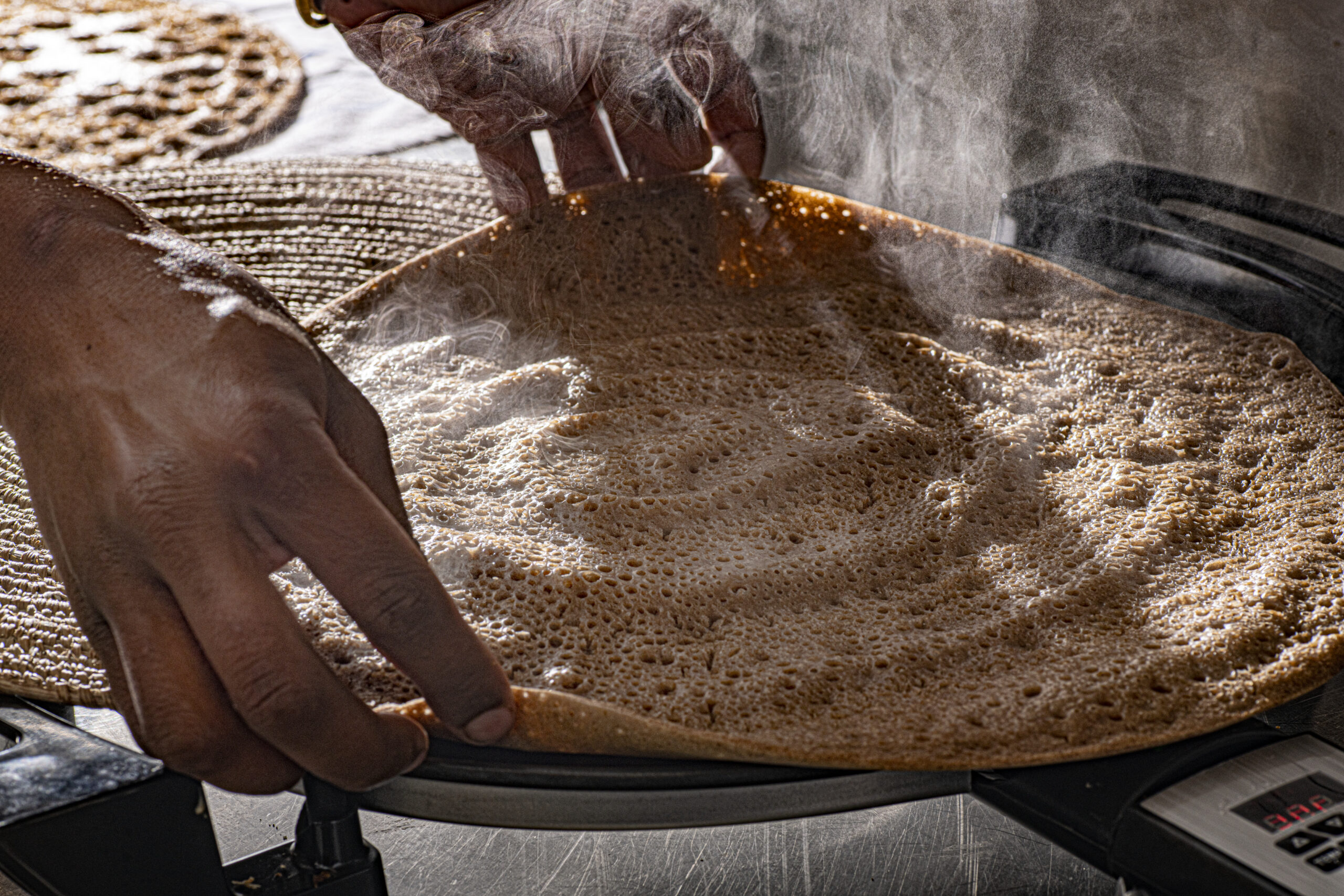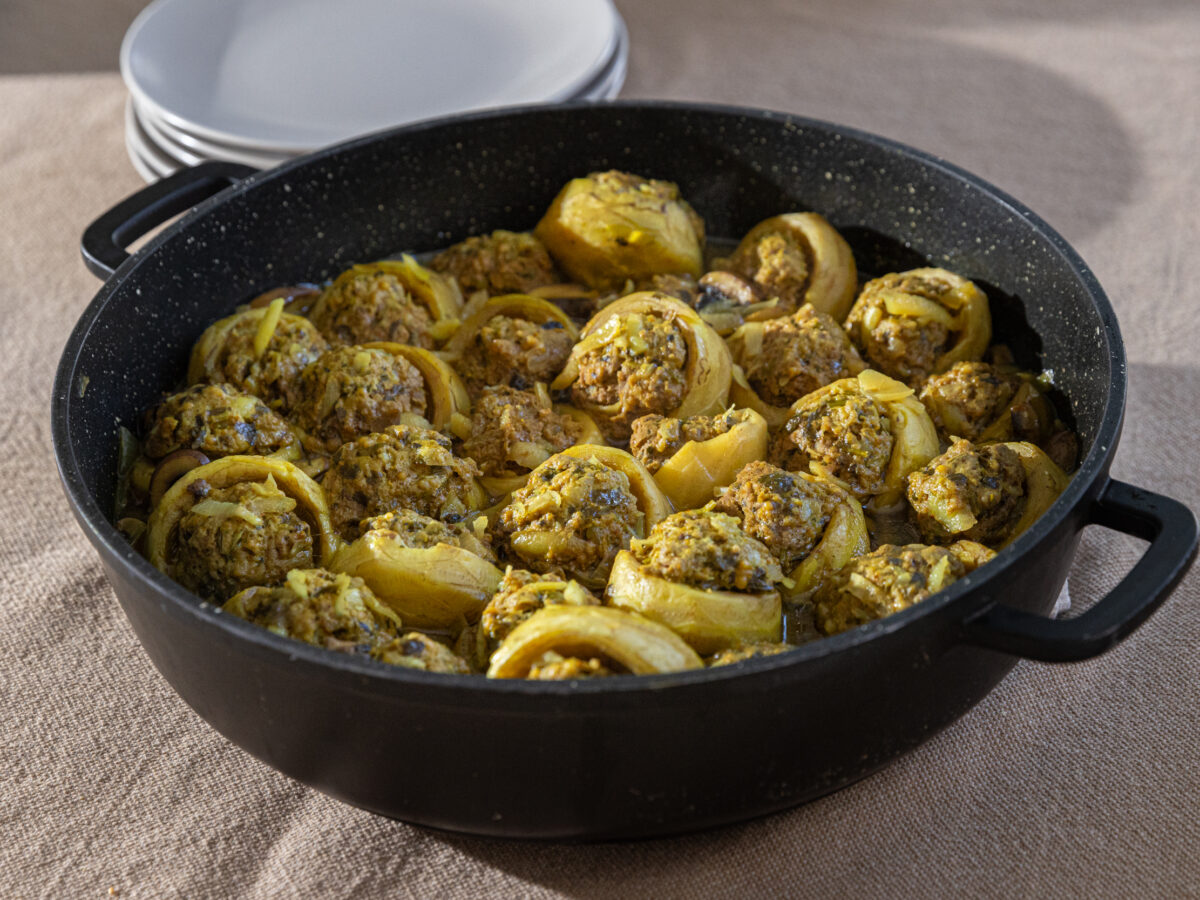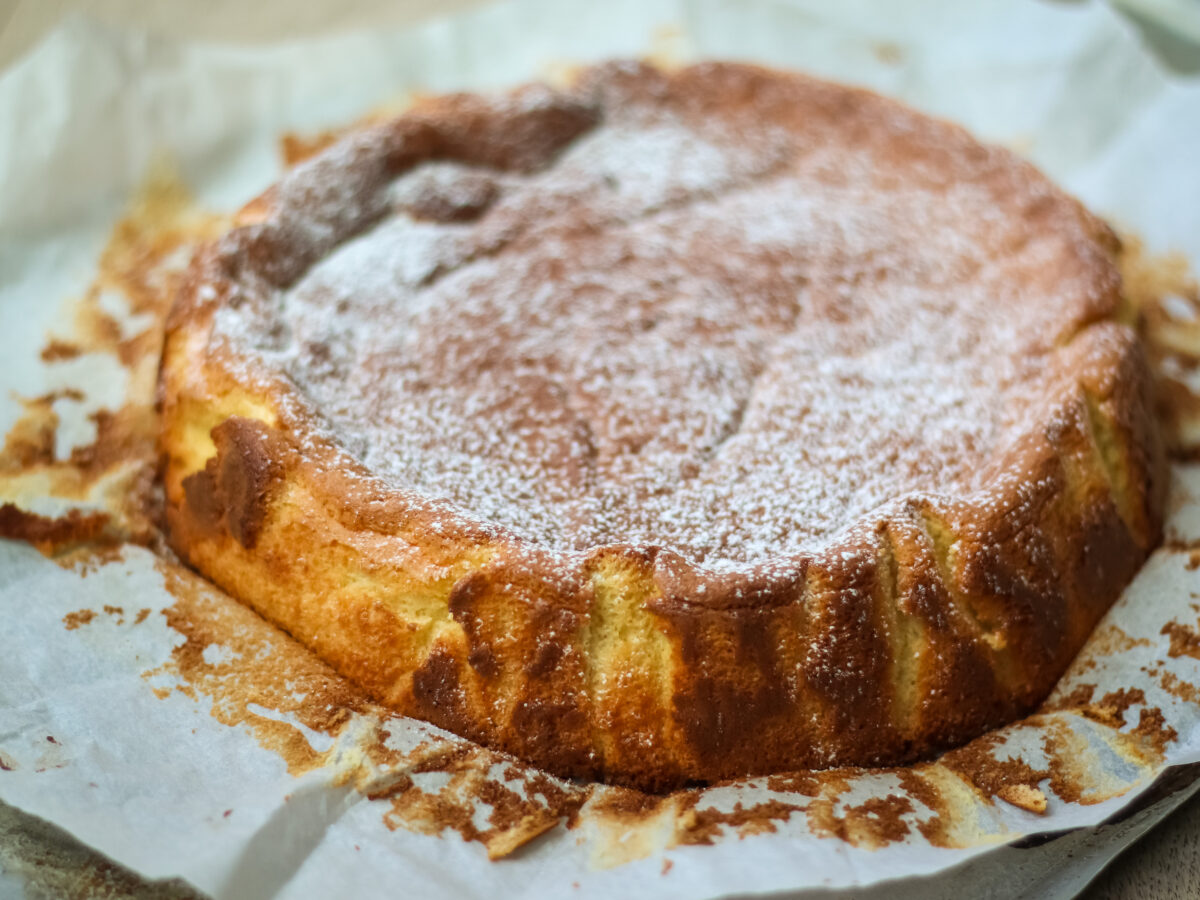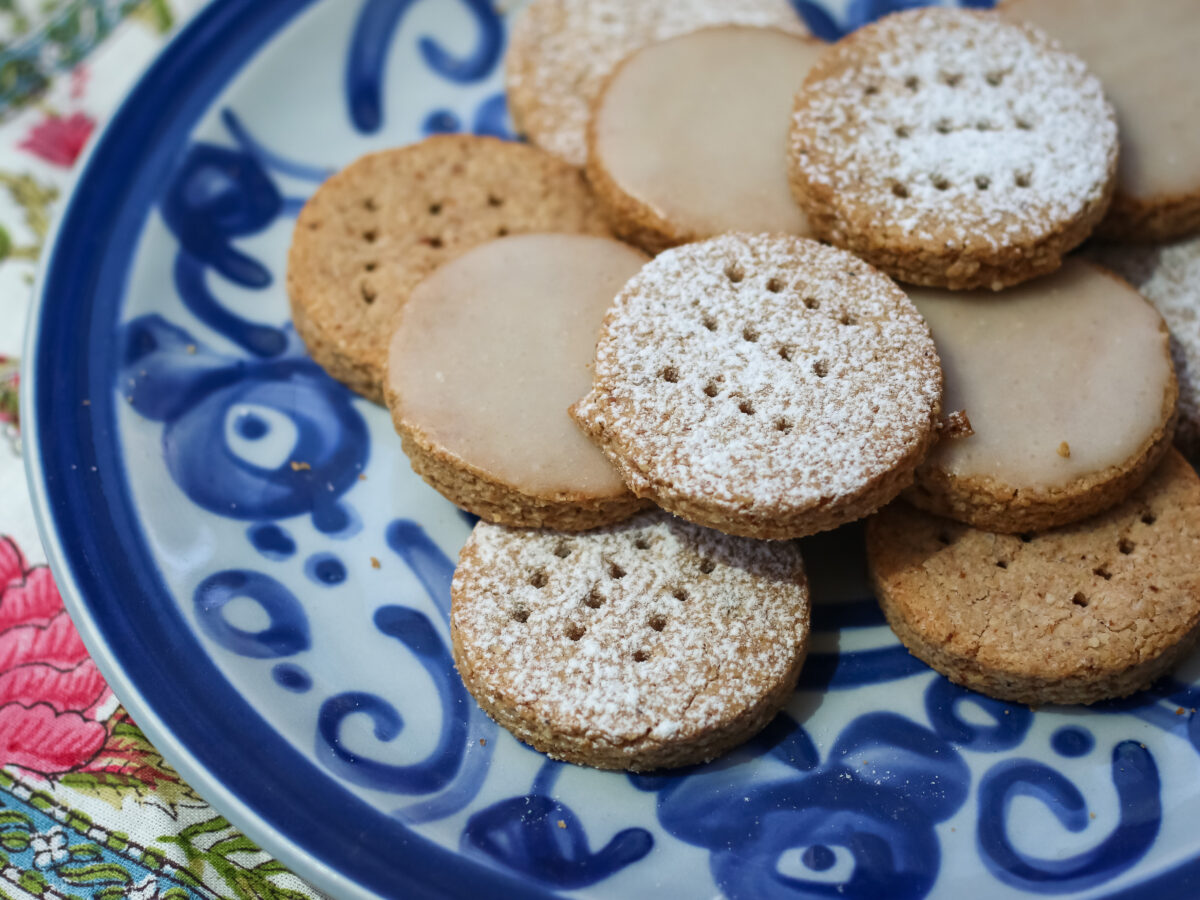
“In Ethiopian culture it is considered rude to eat individually portioned dishes,” explains chef and artist Elazar Tamano. Traditionally, everyone shared means from the same tray, covered by a large injera. “However, time and place altered this culinary tradition, and you are welcome to make individual-sized injeras,” he adds.
Injera’s signature tang comes from a sourdough starter made with teff, an ancient and gluten-free and nutrient-rich plant. There are a few varieties and two are called for in this recipe. You can find them at Ethiopian shops like Sod Hakesem and sometimes online. Making injera from scratch takes patience, you’ll need to tend to the starter for a few minutes everyday for five days, and the injera itself will take another two days to make, so be sure to start well in advance.
Pair this injera with Tamano’s contemporary spin on doro wat, a rich chicken stew, and kitfo, or steak tartare with spices and clarified butter. Find more of his recipes here.
Ingredients
- Teff sourdough:
- 7 ounces / 200 grams teff flour
- 7 fl. oz / 200 grams water
- Injera:
- 3¾ cups / 900 ml lukewarm water
- 1¾ tablespoons / 35 grams honey
- ½ teaspoon / 2 grams active dry yeast
- ½ cup / 100 grams teff flour sourdough, see recipe below
- 2.2 pounds / 1 kg white (nech) or brown (sergegna) teff flour
- 3 teaspoons / 15 grams fine salt
- 1½ cups + 2 teaspoons boiling water
- 3 tablespoons raw tahini, for greasing the pan
Preparation
- Prepare the teff sourdough: in a glass or other non-reactive container, a quarter of the teff flour and a quarter of the water to a smooth batter. Loosely cover and let rise at room temperature for a day.
- The following day, add a quarter more of both and mix to a smooth batter. Loosely cover and let rise at room temperature for another day.
- On the 3rd day bubbles should appear on the surface. Discard half of the batter. Then, repeat the step from the previous days, adding a quarter of the flour and the water to, and mix to a smooth batter. Loosely cover and let rise at room temperature for a day.
- On the 4th day, discard half of the mixture. Then, add the remaining flour and water, and mix to a smooth batter. Loosely cover and let rise at room temperature for a day.
- On the 5th day the sourdough starter is ready and should be kept in an airtight container in the refrigerator.
- The starter should be fed once a week: discard half of the batter, and add the water and flour for a feeding ratio of 1:1:1.
- Prepare the injeras: Place 15 fl. oz / 450ml lukewarm water and honey in the bowl of a stand mixer fitted with the paddle attachment and beat at high speed until the honey has completely dissolved.
- Add the active dry yeast and teff flour sourdough and mix to a smooth batter (make sure no residue is left at the bottom of the bowl).
- Add teff flour and salt and beat on medium speed for 3 minutes to combine.
- Add the remaining lukewarm water (15 fl oz / 450ml) and beat on medium speed to a smooth batter with no lumps (make sure no residue is left at the bottom of the bowl), 2-3 minutes. The batter should be muddy.
- Pour 2 tablespoons of water over the batter, cover with cling film and leave to ferment in a warm place for at least 26 hours.
- The following day, add boiling water to the mixture, stir and let stand in a warm place for 2 hours, until bubbly and slightly puffy. The mixture should be slightly thinner than a pancake batter. Transfer to a jug.
- Heat a non-stick pan the diameter of the injera you want to serve (whether as a starter or a main course). The pan should be hot but not sizzling.
- Dip a paper towel in the raw tahini and grease the pan. Pour the batter in a spiral motion working from the edges of the pan towards the center, 0.1-in / 2-3mm thick (if using a small pan, simply pour and spread into a uniform layer).
- Bubbles will begin to pop on the surface of the injera and it will slowly dry out. When almost done, cover the pan and cook for 1 minute. Using a flexible spatula, carefully transfer the injera to a plate lined with a towel, taking care not to tear it. Repeat these steps with the remaining batter.




